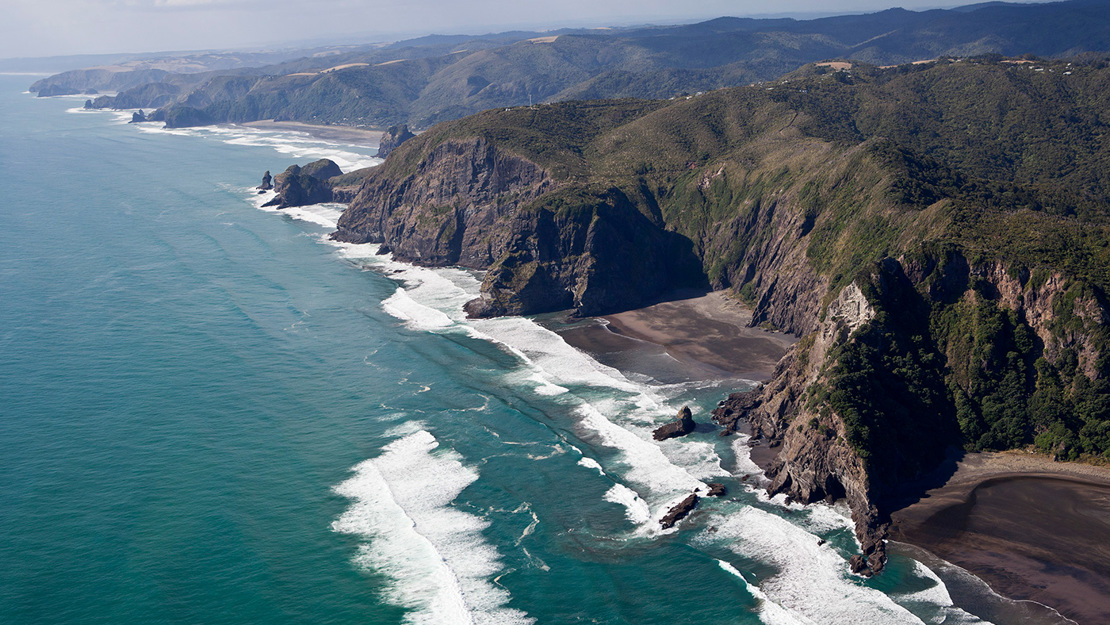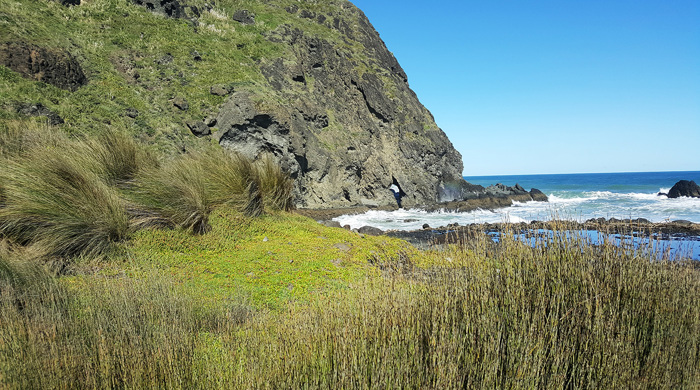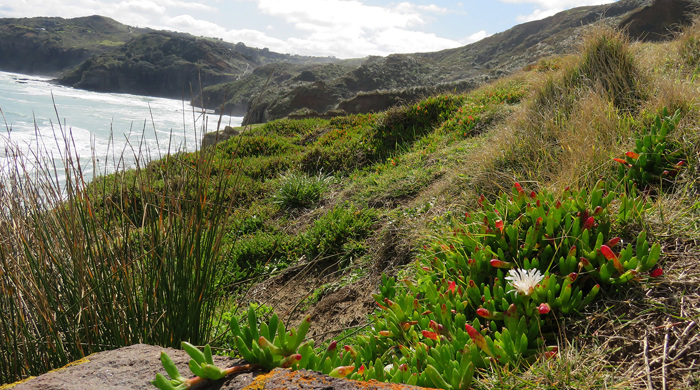Waitākere Coastal Forest and Turf
The western coastline of the Waitākere ranges is dominated with coastal forest and pōhutukawa treeland / flaxland / rockland ecosystems. You can see small patches of coastal turf and areas of petrel scrub on the small islands where seabirds nest.
Size: 282 hectares
Site description
The Waitākere Coastal Forest and Turf biodiversity focus area extends along the Waitākere coastline from Bartrum Bay (south of Muriwai) to Karekare. It includes mostly public land. The terrain is rugged and volcanic in origin.

Key ecosystems
The ecosystems covered by this biodiversity focus area include:
- petrel scrub (SA7) on small islands occupied by seabirds close to the main coastline
- coastal turf (SA5) sites - the best remaining mainland examples of this ecosystem type
- extensive areas of coastal vegetation on steep cliffs (CL1)
- coastal forest (WF4) remnants in gully areas and where the hillslopes are less steep.
The coastal forest remnants include some of the best examples on Tāmaki Makaurau / Auckland’s west coast. Flax is abundant on the cliffs, although there are a variety of other coastal trees, shrubs and herbs present including threatened species.
Petrel scrub
The ground beneath the petrel scrub (SA7) on one of the islands is covered in seabird burrows. The vegetation here is a mix of coastal trees and shrubs including houpara, karo, kawakawa and hangehange. Glasswort and iceplant are also locally common, but generally the ground is bare due to regular disturbance by the burrowing seabirds.
Petrel scrub was formerly widespread on suitable coastal sites throughout the mainland, associated with burrowing seabird colonies. However it is now mostly restricted to predator-free offshore islands where seabird colonies persist or are recovering.


Coastal turf
Coastal turf is one of Aotearoa / New Zealand’s naturally uncommon ecosystem types. It has become increasingly rare over time due to:
- coastal development
- damage by livestock
- weeds
- erosion.
The four coastal turf sites included in this biodiversity focus area are the best examples on mainland Tāmaki Makaurau / Auckland.
Habitat values
The vegetation throughout this biodiversity focus area provides important habitat and food sources for native animals including lizards, forest birds and seabirds. Ōi (grey-faced petrel) and kororā (little penguin) nest in a number of places along this coastline.
Conservation management
An ongoing weed control programme by Auckland Council helps to protect the coastal turf and threatened plant populations. Animal pest control is also underway to protect seabird nesting areas.



